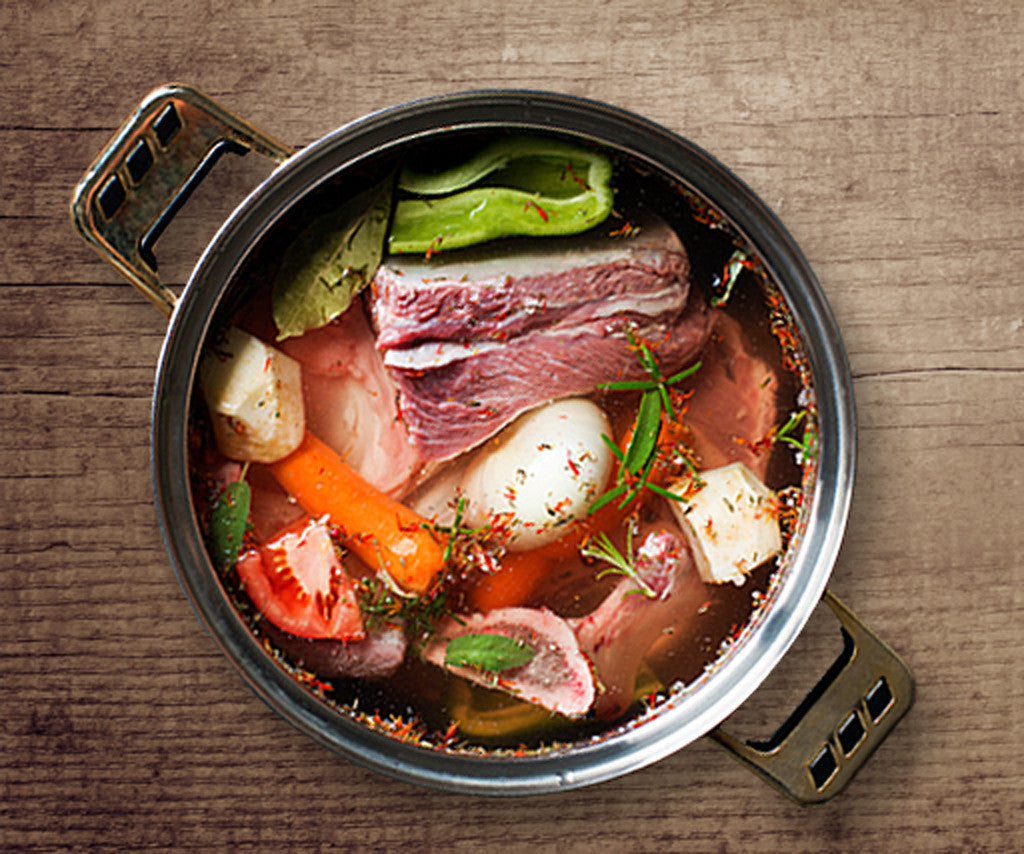Many of us assume that falling ill over the winter months is just a given, but what if we could strengthen our immunity so that we had more ability to fight off the common viruses that cause winter colds and flus?
So is it too good to be true? Or did our Grandparents have it right all along?
Bone broth (aka stock) is basically what it sounds like; left over bones (feet, heads, necks and backs, knuckles, or tails are all good) thrown in a slow cooker with some water and seasonings if you like, and cooked on low for 8-24 hours.
So why all the hype?
The simmering process of making broth causes the bones and ligaments to release healing compounds like collagen (broken down into gelatin), proline glycine and glutamine. These proteins and amino acids are excellent for bone remodelling and joint health, they help with digestion (through stimulating acid production and also by healing 'leaky gut' and maintaining the function of the intestinal wall), they aid in detoxification (helps the liver in its role), can speed wound healing, promotes sleep and on a more superficial level, improves skin appearance (Paleo Leap, 2016).
What a huge number of benefits from such a simple and cheap process!
I like to drink bone broth by the cup full with some Himalayan sea salt, turmeric and cumin, but you can also use it as a base for curries, stews, soups, chilli's and bolognese.
If you don't already own a slow cooker...my advise is to use the winter sales to invest in one and get simmering. Here's to happy gut health.
References
Paleo Leap. (2016). What's in a bone? Retrieved from http://paleoleap.com/eat-this-bone-broth/
Hartwig, D & M. (2012). It starts with food. USA: Victory Belt Publishing Inc.

